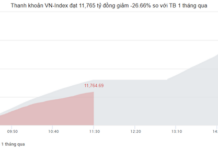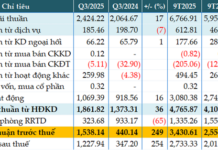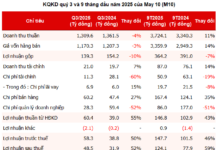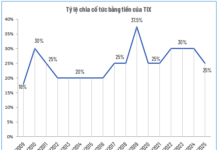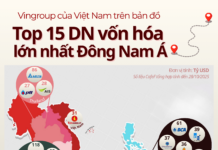The development of transportation infrastructure in Tay Ninh not only provides convenient conditions for travel but also plays an important role in stimulating the province’s tourism industry.
PV VTC News interviewed Mr. Duong Van Thang – Vice Chairman of Tay Ninh Provincial People’s Committee about the synchronization between transportation development and tourism sector that has created a comprehensive development ecosystem, making positive contributions to the local economy.

The 30/4 road in Tay Ninh city has been expanded to 6 lanes. (Photo: Tay Ninh Newspaper)
– Sir, what solutions have been implemented to promote transportation development in Tay Ninh in recent years?
Transportation is a sector that must lead the way, opening up opportunities for the development of other economic sectors. The reality has shown that any locality with a complete transportation infrastructure, including a system of highways, airports, and seaports, will experience rapid and sustainable development.
Based on this perspective and awareness, the 11th Party Congress of Tay Ninh Province for the 2020 – 2025 term identified the development of transportation infrastructure as a breakthrough for the province. This is a very appropriate and popular direction that is fully supported by the people and implemented by all levels of the political system with determination and vigor.
To realize this perspective and awareness, the province has mobilized resources from the local budget, the central budget, and other social resources to develop transportation. In the period 2021 – 2025, the total capital from the provincial budget allocated for mid-term construction is 20,000 billion dong, of which 6,000 billion dong is exclusively dedicated to transportation. In terms of proportion, this accounts for more than 1/4 of the total investment capital for development in the mid-term period.

Mr. Duong Van Thang, Vice Chairman of Tay Ninh Provincial People’s Committee. (Photo: Tay Ninh Newspaper)
In addition, the province has tried to utilize and take advantage of central resources to invest in projects within the province. For example, the border patrol road project led by the Ministry of National Defense, Military Region 7 had a total investment in the first phase of over 1,500 billion dong.
Currently, about 160km of this project have been invested, which is of great significance in terms of national defense and security and for the people in the border areas to develop the economy and society. When the road is completed, people will be happy and feel secure in their production and daily life because the infrastructure is now complete.
Most recently, the province has cooperated with the Ministry of Transport to start the project of Ho Chi Minh road section from Chau Thanh to Duc Hoa. This project passes through Tay Ninh for about 20km with an investment scale of about 2,300 billion dong. This is a very important project that, when completed, will connect Tay Ninh with the Southeast, Southwest, and Central Highlands regions.
– According to you, which key infrastructure projects will contribute significantly to the positive transformation of transportation in Tay Ninh?
Firstly, there is Provincial Road 744 connecting Tay Ninh – Binh Duong, with a total budget of 1,800 billion dong for investment and connection with Binh Duong. This is an important project to enhance regional connectivity and promote the socio-economic development of the provinces in the Southeast region.
Secondly, there is the project connecting Tay Ninh with Binh Phuoc – Road 794. Currently, the second phase of this project is being invested in, expanded, and upgraded.
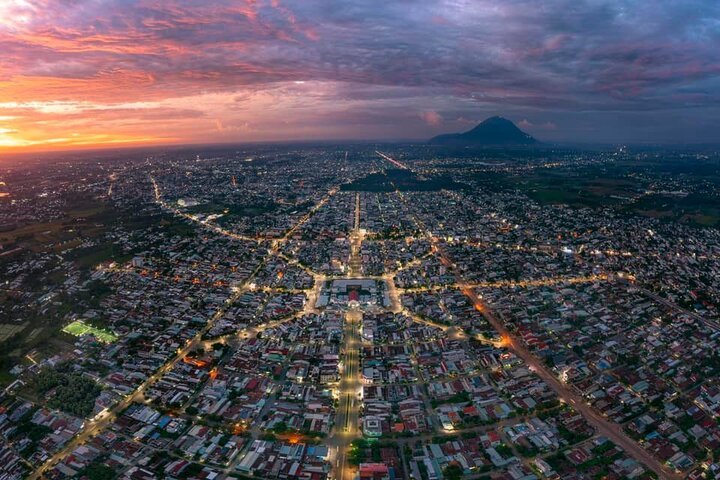
Overview of Long Hoa market and Ba Den Mountain. (Photo: Le Viet Khanh)
Thirdly, Tay Ninh is also investing resources to connect with Long An’s Road 838C. When these roads are completed, travel time to Long An, Binh Phuoc, Binh Duong, and Ho Chi Minh City will be faster, saving time and costs for residents and businesses.
Other planned road projects include internal routes within Tay Ninh. For example, the province has invested in Road 793, 792 from Tay Ninh city to Tan Bien and Tan Chau districts leading to Chang Riec border gate. Additionally, Road 795 connecting Tan Bien and Tan Chau has also been completed…
In addition to connecting regional and inter-provincial roads, recently Tay Ninh has also focused on urban road improvements. For example, the 30/4 road, which is beautifully designed with 6 lanes, is the first project in the province to have all underground telecommunication infrastructure, electricity, and water systems, and has been expanded to Hòa Thành district and surrounding areas.
All of these projects have contributed to changing the face of the city and have received widespread support from the people. This is because these projects have been thoroughly and carefully invested in, allowing people to feel assured that they do not need to relocate and conduct business more efficiently compared to the old streets that have not been urbanized.
– What are the important factors in improving the road transport system of the province?
The first factor is the unified perspective and united action of the political system and the people of the province. The people in the province are united because in recent times, the localities have launched propaganda campaigns and implemented new, modern, and beautiful infrastructure projects, enabling the people to feel enthusiastic.
In the border patrol road project, even when it was not ready and without compensation funds, the people still handed over their land to the contractor. They believed that this was a road to demonstrate national sovereignty and security, so they felt comfortable. This really touched us.
From the border patrol road project to the subsequent domestic projects, almost all the people were united. Although there were a few cases requesting price reconsideration or reviewing the area, the majority of them supported the projects.
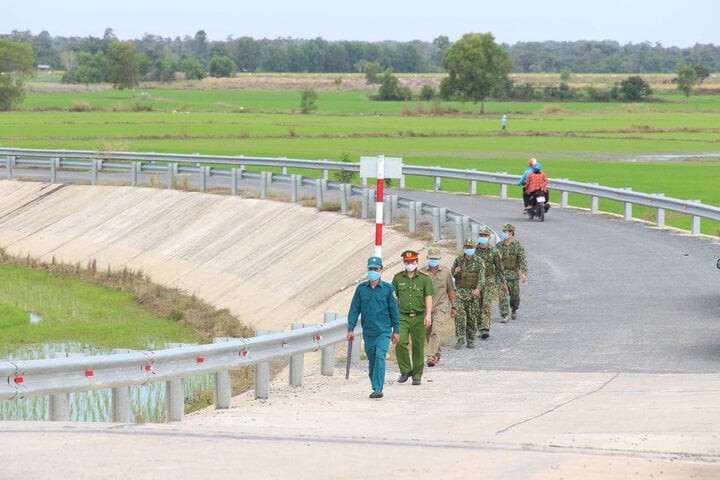
Border patrol road in Tay Ninh. (Photo: Tay Ninh Newspaper)
The unity of the people has led to the quick clearance and disbursement of funds, ensuring the smooth implementation of the projects. This is demonstrated by the fact that in recent years, Tay Ninh has ranked among the provinces with a high disbursement rate.
Specifically, in 2022 and 2023, Tay Ninh is also one of the 15 provinces with the highest disbursement rate according to the plan of the Prime Minister for public investment. In 2023, it was among the top 10 provinces with on-schedule disbursement according to quarterly, 6-month, and 9-month reports.
The second important factor is the concentrated and determined deployment of tasks. The province has established a Breakthrough Steering Committee, in which transportation is one of the breakthroughs, led by the Secretary of the Provincial Party Committee. Next is the establishment of a working group led by the Vice Chairman of the Provincial People’s Committee, with relevant departments as members.
This group’s task is to direct, inspect, and resolve difficulties and obstacles of key construction projects and hold regular meetings with investors from the provincial to district level to listen to reports on the disbursement of capital, difficulties, and proposals in order to resolve them as quickly as possible.
The third factor is that the province has established a land clearance committee for key construction projects. Since the establishment of this committee, there has been a transformation in land clearance work.
Another important factor is the establishment of a work exchange group consisting of provincial leaders, department directors, and local authorities to discuss specific issues within the group.
For example, if a unit or locality is facing difficulties in land clearance or slow payments to people or slow progress by contractors, these issues will be brought up in the group for discussion and resolution.
– Which key projects in the transportation sector are prioritized and contribute significantly to the development of the province in 2024, sir?
The first project is the Ho Chi Minh City – Moc Bai expressway, which is a very important project to plan for the province’s economy and society, as affirmed by the provincial Party Committee and government.
This project not only benefits the two localities but also plays a significant role in connecting the Phnom Penh – Bau Bang expressway and connecting from Phnom Penh to other countries.
Tây Ninh Province is very interested in and has cooperated well with Ho Chi Minh City to implement this project. Currently, the project is being appraised by the Ministry of Planning and Investment, and it is expected to be submitted to the Prime Minister for approval and investment decision this year.

Overview of Tay Ninh City. (Photo: Duong Vinh Tuyen)
The second project being implemented in Tay Ninh is the Go Dau – Xa Mat international border gate expressway. Currently, a feasibility study report has been prepared, and we will try to hold a meeting soon. The central government has assigned Tay Ninh as the authority to decide on investment in the form of public-private partnership (PPP). Accordingly, the province will invest in land clearance, while investors will invest in operating and toll collection.
Thirdly, Tay Ninh will focus on completing two components of the 787B, 789, N8 interconnecting road project. These are important roads connecting Tay Ninh to Long An through many districts in the province, with a total investment of over 300 billion dong. These projects have started and are expected to be completed in 2024.
– In recent years, the number of tourists coming to Tay Ninh has been increasing significantly. Has transportation development in the local area made a significant contribution to this?
Currently, the number of tourists visiting the Ba Den National Tourist Area has reached 5 million. Every day, every month, and every year, when tourists return to Tay Ninh, they can see the changes and improvements in transportation infrastructure.
Transportation has changed and developed, reducing travel time and costs for tourists, so the annual number of visitors to the province is increasing.
In addition, Tay Ninh’s tourism sector has been well planned and invested in various attractive products, which also contributes to the increasing number of tourists.
Thank you, sir!

